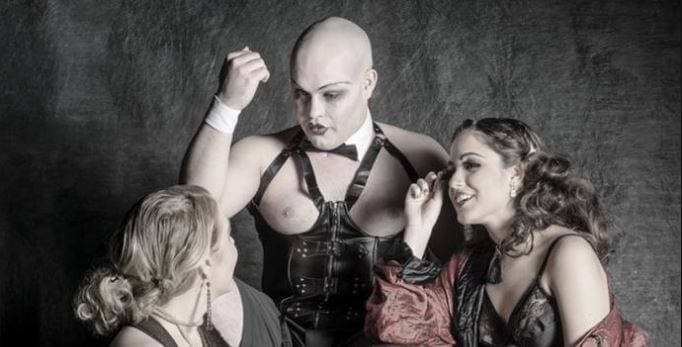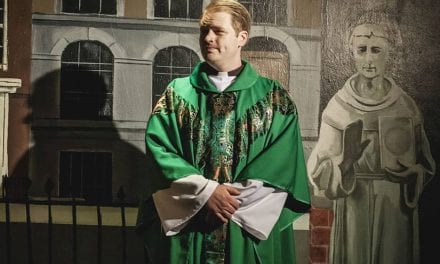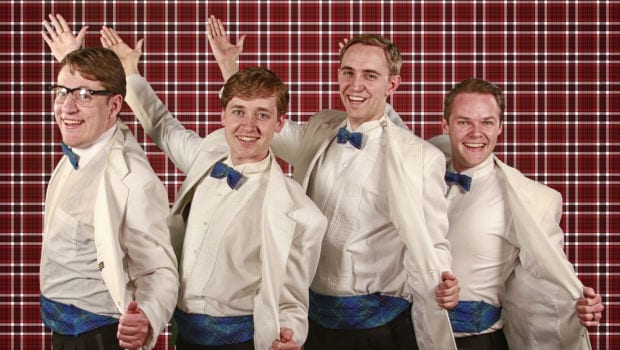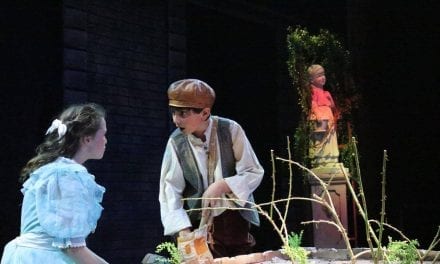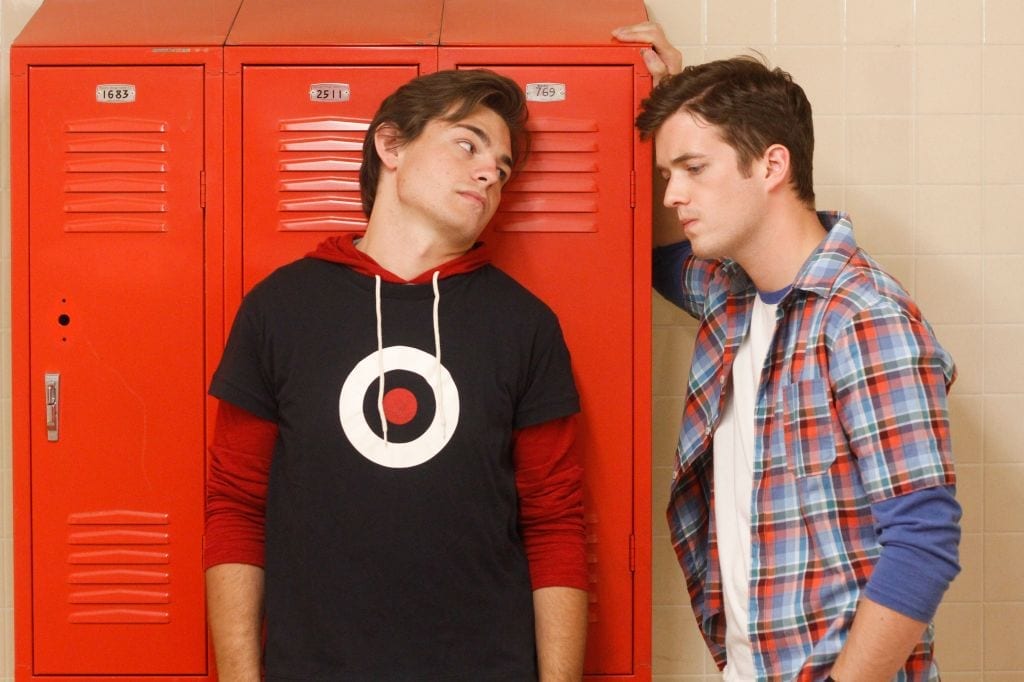OGDEN — Considered a classic since it first opened in the 1966, Cabaret has been a popular musical, winning several awards, including Tonys for the original Broadway run and its revival. Based on the Berlin Stories by Christopher Isherwood, and the play I am a Camera by John Van Druten, Cabaret uses John Kander‘s music, Fred Ebb‘s lyrics, and Joe Masteroff‘s book to tell the story of the relationship between a young American writer and a British cabaret singer in Weimar Germany through the construct of a seedy nightclub, the Kit Kat Klub.

Show closes June 24, 2017.
Cabaret was unusual upon it opening on Broadway, as it has no overture, no show curtain, and the stories of the main characters are told both through scenes of real life and interpolated cabaret performances. Scenes move fluidly from real life to cabaret performances with characters playing varying characters in both worlds. The seedy nature of the club has always been a factor in the musical, but with the 1998 revival, that seediness took on a much more sexualized nature. This is brought out most by the reinterpretation of the Emcee, recreated in the revival by Alan Cumming. The Ziegfeld Theater’s current production owes much to this latest revival. Unfortunately, it falls short of the vision in several ways.
The Ziegfeld is a small, intimate space in Ogden and has produced some truly stunning productions. They do a broad mix of traditional and edgier shows. Unlike many Utah theatre companies, they are not afraid to stray out of the comfort zone of many audience members. This can be a blessing and a curse. It’s a blessing when you get to see an amazing production by a small company that succeeds beyond their means. It is a curse when the potential exists, but the production falls short of expectations. Cabaret falls into this latter category.
 Overall, the production was pleasing. The set, costumes, choreography, and musical direction all show a unified vision for the show. As stated in the director’s (Trent Cox) notes, this production follows closely the latest revival of the show on Broadway. And I appreciated the desire to bring those production values to Utah. It was in the details, however, that things started to unravel. The Emcee, played by Joshua Samuel Robinson, was energetic and vibrant, but this enthusiasm often made it difficult to understand lyrics and—in a couple of instances—dialogue as well. Accents also seemed to be a detail that some actors handled well, while others struggled, particularly when singing. It take great care and precision to sing and maintain an accent, and this seemed to be one of the lesser concerns.
Overall, the production was pleasing. The set, costumes, choreography, and musical direction all show a unified vision for the show. As stated in the director’s (Trent Cox) notes, this production follows closely the latest revival of the show on Broadway. And I appreciated the desire to bring those production values to Utah. It was in the details, however, that things started to unravel. The Emcee, played by Joshua Samuel Robinson, was energetic and vibrant, but this enthusiasm often made it difficult to understand lyrics and—in a couple of instances—dialogue as well. Accents also seemed to be a detail that some actors handled well, while others struggled, particularly when singing. It take great care and precision to sing and maintain an accent, and this seemed to be one of the lesser concerns.
The sound design by Eliza Haynie seemed also to be of little concern. There was an attempt to have the leads boosted above the ensemble, but this created a situation in most numbers where the ensemble was almost inaudible, and it became distractingly obvious when the leads would stop singing to catch their breath. Also on several numbers, most egregiously during “Money, Money,” the accompaniment was so loud that dialogue was lost almost entirely. And there was almost always a constant hum in the audio caused by a poor mix on the soundboard.
 Which brings me to another nitpicky criticism. There were a few details in props and costume that seemed almost sloppy in execution. During the aforementioned “Money, Money” paper currency is tossed around the stage. Fake American currency. Very few currencies in the worlds are the same shape and color of US bills. And with the internet, it is painfully easy and cheap to download images of world currencies to use for that number. Also, at several times, the Emcee is dressed in a quasi-military costume with an obviously military cap with a definite US military crest on the front. Both of these may have been intentional choices, but there was no specific motivation in evidence. They just seemed like details that were either shrugged off, or completely overlooked. Unfortunately they took me out of the action of the show, and made me question the choices of the production team.
Which brings me to another nitpicky criticism. There were a few details in props and costume that seemed almost sloppy in execution. During the aforementioned “Money, Money” paper currency is tossed around the stage. Fake American currency. Very few currencies in the worlds are the same shape and color of US bills. And with the internet, it is painfully easy and cheap to download images of world currencies to use for that number. Also, at several times, the Emcee is dressed in a quasi-military costume with an obviously military cap with a definite US military crest on the front. Both of these may have been intentional choices, but there was no specific motivation in evidence. They just seemed like details that were either shrugged off, or completely overlooked. Unfortunately they took me out of the action of the show, and made me question the choices of the production team.
Overall, the supporting actors outperformed the leads. Carol Madsen as Fraulein Schneider and Kevin Ireland as Herr Schultz were near perfection in their portrayals. Their scenes together and their two numbers, “It Couldn’t Please Me More” and “Married,” were highlights of the show because they were some of the most tender and realistic moments of the show. Clifford Bradshaw, played by Nathan Allen Vaughn, was also very naturalistic in his acting. His character arc throughout the show was very satisfying and artistically done. I wish the same were true of Kelly Tansey as Sally Bowles. I realize that the character is supposed to be over the top and exaggerated, but even though Sally is supposed to be a mediocre performer, Sally’s two big numbers, “Maybe This Time” and “Cabaret,” are show stoppers. Tansey, however, was often off pitch and did not have the control those songs require to be true powerhouses. Also, in several numbers her choreography seemed underrehearsed, with Tansey watching her feet. I’m not sure if this was intentional or not, but if it was part of the show, it was not readily apparent.
While this may all seem hopelessly nitpicky, I must emphasize that this was an enjoyable show and I recommend it, particularly to anyone who has never seen Cabaret. This is a fine production, just not the stunning production I would have expected from the Ziegfeld. I know that the audience on the night I attended was heartily enjoying the show, and perhaps I am too particular, but these drawbacks kept me from whole-heartedly enjoying this show and losing myself in it theatricality.

